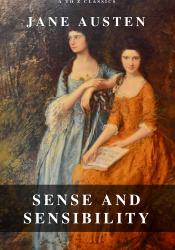"Sense and Sensibility" by Jane Austen
Sense and Sensibility by Jane Austen (1775-1817) was published in 1811 anonymously under the name "By A Lady". In the beginning of Austen's career it took her almost 15 years to find a publisher which is during the time she wrote Sense and Sensibility. Sense and Sensibility tells a story revolving around the Dashwood sisters and their experiences of societies constructed rules of etiquette , manners, and proper passion. In Claudia Johnson's essay "Sense and Sensibility: Opinions Too Common and Too Dangerous" she argues that Sense and Sensibility is, "... dark and disenchanted novel exposes how those sacred and supposedly benevolent institutions of order - property, marriage, and family - actually enforce avarice, shiftlessness, and oppressive mediocrity" (par. 1). Johnson continues by mentioning the importance of how Austen highlighted how the absence of male protectors thus resulting in the marginalization of women and concludes by calling this novel Austen's most socially progressive work (par. 6). Austen's work influenced and used the novel to push against and expose social constructs in a way that used everyday life to demonstrate the difficulties of obding by the rules enforced on women during the time.
“Austen, Jane.” Funk & Wagnalls New World Encyclopedia, Jan. 2018, p. 1; EBSCOhost, search.ebscohost.com.pointloma.idm.oclc.org/login.aspx?direct=true&db=funk&AN=au176300&site=ehost-live.
Johnson, Claudia L. "Sense and Sensibility: Opinions Too Common and Too Dangerous." Nineteenth-Century Literature Criticism, edited by Lawrence J. Trudeau, vol. 271, Gale, 2013. Gale Literature Resource Center, link.gale.com/apps/doc/H1420114147/LitRC?u=sand82993&sid=bookmark-LitRC&xid=ea12e780. Accessed 1 June 2021. Originally published in Jane Austen, U of Chicago P, 1988, pp. 49-72.

